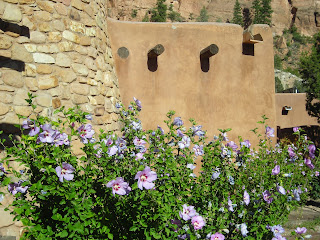After leaving the peace and quiet of Christ in the Desert, I headed to my destination here in New Mexico – the Sangre de Cristo Center near Santa Fe. It, too, lies snuggled up in a canyon in the Sangre de Cristo mountains. We are 34 religious men and women from every continent on the earth. Some people come from places I have yet to find on the map! It is a wonderful mix of priests, brothers and sisters. Most of them have had extensive missionary experience. It is nice to be able to talk about mission issues with people who can understand the complexities we deal with. Some of them have even been to Brazil.
It took us all a while to get used to the altitude. Sangre stands at over 7,000 ft. We all experienced headaches, shortness of breath, and had trouble sleeping the first week. After a while we were able to take short walks and do regular house work. But no one is considering running a marathon yet!
The first week was like “Hell Week” at a Fraternity, since we had lots of planning meetings and demonstrations to help us get to know the house and how things work. We all help with the upkeep, cleaning and cooking. I do some music work, am a driver who brings folks into Santa Fe on our days free, and most importantly, I am the “Massage Czar”! I help coordinate the massage appointments of the members of the group each week. It is quite popular and we all get a free one hour massage to start off.
Usually we have Wednesday and Saturday afternoons free to explore Santa Fe. The first weekend here coincided with Santa Fe Fiesta Days, so there were lots of things to see in the central Plaza. We saw mariachis and dance groups, as well as sampled many of the local delicacies from the street vendors. My friend Vitolia, from Somoa, was intrigued by the different costumes and music.
It is a city of artists and their work is everywhere. It is very beautiful. Since I like flutes, I decided to purchase a beautiful Native American Flute, which has wonderful deep tones. I play at prayer services and Masses here at the Center.
Every street has some kind of art displayed either in galleries or in storefronts, or in gardens and parks.
Santa Fe has a wonderful cathedral, and also has many other interested churches. The Loretto Chapel has the famous staircase built by an anonymous stranger which no one can figure out how it is still standing after all of these years since there are no nails in the structure. Also, the oldest church in America is here, San Miguel’s.
The group is mature and serious, but also fun and creative. Already we have had some very moving liturgies and prayer services. As we all reflect on our religious lives thus far, it is a rich and grace-filled spirit which surrounds us. The Staff is excellent, competent, and very helpful. It is good to be here.


























































